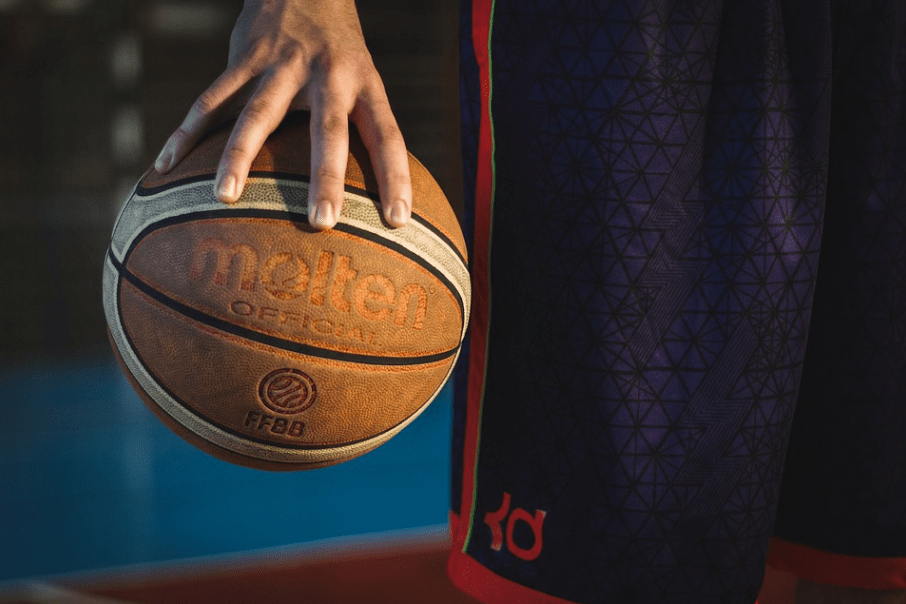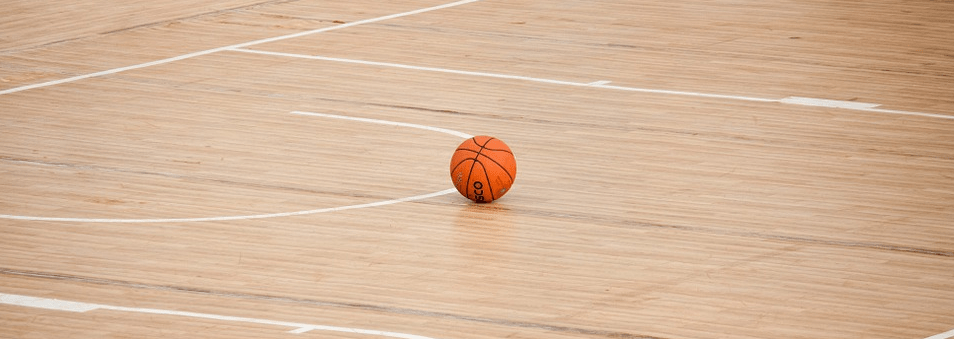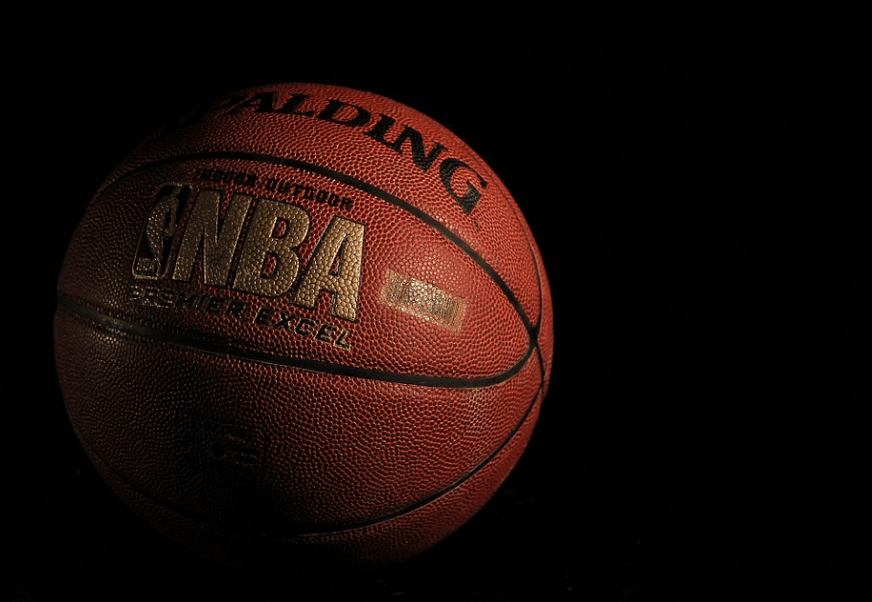Basketball had come a long way since its invention in 1891. Since then, the sport has become an instant global athletic phenomenon. Both young and adult fans go crazy about their favorite teams, especially during the playoffs.
If you are a geeky basketball fan or, let’s say, an NBA star in the making, you probably already knew why basketballs come in different types. When a basketball sounds differently as it bounces, you could quickly tell. But for most kids who are just learning how to play basketball, let alone know trivia about it, looking at many basketball variations can be a wonder. So, for those who are wondering what the different types of basketball are, read on below.
What is a Basketball?
A basketball is an ovoid, spherical ball used in the game basketball. Basketballs come in different colors, sizes, and materials used. Players dribble, pass, shoots, and dunks this ball to the opponent’s hoop to gain an advantage of point and determine the game’s victor. In its earlier years, players used soccer balls to play the game until the first basketball in 1894, made of laced leather.
The History of Basketball
As a less dangerous sport than football, James Naismith, a Canadian physical education instructor from Springfield, Massachusetts, invented basketball in 1891. The indoor sport was created by Naismith, a graduate student of 31 years, to keep athletes inside during the winter.
As the twentieth century progressed, the game quickly became well-established and enormously popular, first in America and then all across the world. The popularity of basketball in American colleges led to the development of the professional game.
By the turn of the century, the 1946-founded American National Basketball Association had expanded into a multibillion-dollar business, and basketball had become ingrained in American culture.
Where Basketball Made its Debut
Winter 1891–1892 was in effect. A bunch of restless college students were sitting in a gym at Springfield College in Springfield, Massachusetts. The young guys were compelled to be present because they had to engage in indoor activities to expend the energy that had been building up since their football season finished.
The marching, calisthenics, and apparatus work they did in gym class were poor substitutes for the more exciting football and lacrosse games they played during the warmer months. Dr. James Naismith invented basketball as we know it today in December 1891 in Springfield, Massachusetts, to train young players through the chilly months.
Naismith was tasked with developing an indoor sports game at his boss’s request so that sportsmen might stay in condition throughout the winter. It was composed of fruit baskets and a soccer-style ball. He established 13 rules for the new game. Out of his eighteen students, he divided them into two groups of nine players each, and he started teaching them the principles of his brand-new game.
The goal of the game was to throw the basketball into the fruit baskets that were affixed to the gym balcony’s lower railing. After every goal, the game had to be stopped so the janitor could get a ladder and retrieve the ball. The fruit baskets’ bottoms were eventually taken off. In Springfield, Massachusetts, a basketball match was played in front of the general public on March 11, 1892.
The Objective of Basketball
In the sport of basketball, the objective is to score points by putting the ball through the hoop. The number of points scored in the game depends on the area of the rectangular court you successfully throw the ball into.
The Team and Equipment
There are 12 players on each team, but only 5 of them can be on the court at once. The various positions include point guard, defensive guard, center, offensive forward, and defensive forward. After that, the players are free to move around the court, but they are required to adopt a position there.
The court is 91 feet long and 50 feet broad, with a rectangular shape. The game begins with a tip off at the midway point, which is marked by a little circle in the middle. A player from each team attempts to gain possession of the ball after the referee tosses it into the air.
At each end of the floor are two baskets that are 10 feet tall. The key, which also contains a free-throw line, is located in the center of the three-point arc that makes up the outside ring. The only equipment required to play is a basketball court.
Teams are required to wear coordinated uniforms, and some players opt to protect themselves by using face masks and gum shields. The game is divided into four quarters of twelve minutes each. The second and third quarters are separated by a 15-minute halftime break.
The Scoring of the Game
Basketball players can score in one of three ways. Three points are awarded for any field goal that is made outside of the three-point line. When a basket is made within the three-point arc, two points are awarded. One point will be awarded for each successful free throw that is made.
Depending on where the foul was committed, the quantity of free throws will vary. Simply outscoring your opponents during the allotted game duration will win you a basketball game. If the final scores are tied, the victor will be decided by the results of one more quarter.
The Basketball Rules
- There can only ever be five players from each team on the floor at once. Substitutions may be made as frequently as desired during the game.
- The only ways to move the ball are either dribbling or passing it. Once a player has two hands on the ball, they are not allowed to dribble or move with it; they must pass the ball or shoot it.
- The ball must cross the half-way line within 10 seconds after entering a team’s half and being recovered by them. A foul will be called and the ball will be turned over if it doesn’t do so.
- 24 seconds are given to each side to attempt a shot at the basket. A shot is considered to have succeeded if it enters the basket or hits the rim. The shot clock is reset for a further 24 seconds if the attempt to make the basket is unsuccessful.
- The team attempting to score a basket is referred to as the offense, and the team attempting to stop them from doing so is referred to as the defense. By blocking shots or stopping them from being fired, the defense must do all in their power to prevent the offense from scoring.
- The ball is then turned over to the opposition after every successful basket.
- A free throw will eventually be awarded once a particular number of fouls have been committed during the course of the game. One offensive team member must shoot from the free throw line unopposed in order to score a free throw. The quantity of free throws a player receives will depend on where the foul was committed.
- Traveling, double dribbling, goaltending, and back court violations are examples of basketball fouls. (Once the ball passes the half way line the offensive team cannot take the ball back over the half way line).
Basketballs Come in Many Colors
Did you know that the first basketball is dark-brown in color? Soccer balls may be the first balls used in the game, and the first ‘basketballs’ were those made of heavy leather, hence the color. It was not until 1957 when Spalding, the first company to manufacture basketballs as we know it today, produced the first orange color. In the modern-day, burnt-orange colored ones are the most commonly used basketballs. However, significant leagues and teams have the standard orange ball with black linings or partitions as a requirement due to the color’s attractiveness, which improves visuals. Other basketball colors are available as well. Like in the American Basketball Association (ABA), basketballs come in red, blue, and white combinations, which create a pinwheel illusion when in motion.
Materials Used
Leather, synthetic (composite), and rubber – are the most common standard materials in manufacturing basketballs. The early manufacturing materials o basketballs were heavy leather, but the material proved to be hard to grip, and they easily slipped the hands when handled. Plus, players in the past complain that the dark-brown color of the leather is sometimes hard to see. So, through the decades, several changes happened as to how the balls were manufactured.
Leather. Modern leather is now softer and suppler to touch compared to that in the past. Hence, most pros use this material during the game. Leather may be expensive, but it’s a top choice for indoor basketball since the material offers a boost in control over the ball. Leather improves the grip even if the palms are sweaty, maintaining an excellent level of handling.
Synthetic. Basketballs made of synthetic material are a pretty decent option. The material offers a so-so performance in the court as it is versatile and durable at the same time. Since it is more durable than leather, balls manufactured from composite materials are available for use in indoor and outdoor basketball.
Rubber. Rubber basketballs are perfect for beginning players and for those who intend to play for recreational purposes. The material offers a boost on bounce and durability, making it an excellent pick for outdoor basketball. The rubber doesn’t easily tear, unlike leather, and it is extra durable too. You can mostly find this on street basketball courts.
The process of manufacturing the balls and the materials used to produce them affect the gameplay. For instance, leather basketballs create a particular leather drum sound as they bounce, while rubber ones make a ‘thwak’ sound when dribbled. Also, the material affects the control and grip over the ball and its feel when held.
Size Matters
Basketball is an inclusive sport that attracts all people regardless of age and gender. Hence, it comes in many sizes to cater to the differences between groups.
Men’s Basketball. Basketballs in the National Basketball Association (NBA), manufactured by Spalding, have a 29.5-inch circumference and weight of 22 oz. The balls’ inflation measures from 7.5 to 8.5 oz per square inch and are excellent for boys aging 12 and above.
Women’s Basketball. In the Women’s National Basketball Association (WNBA), balls are slightly smaller than men’s. WBNA basketballs measure 28.5 inches in circumference. The difference is because men’s hands are generally larger than women’s.
Other sizes. Youth size balls measure 27 inches in circumference and are excellent practicing balls for kids aging 4 to 8 years old. For beginners who are training their hand and eye coordination, a basketball that measures 22 inches in circumference is your best pick.



